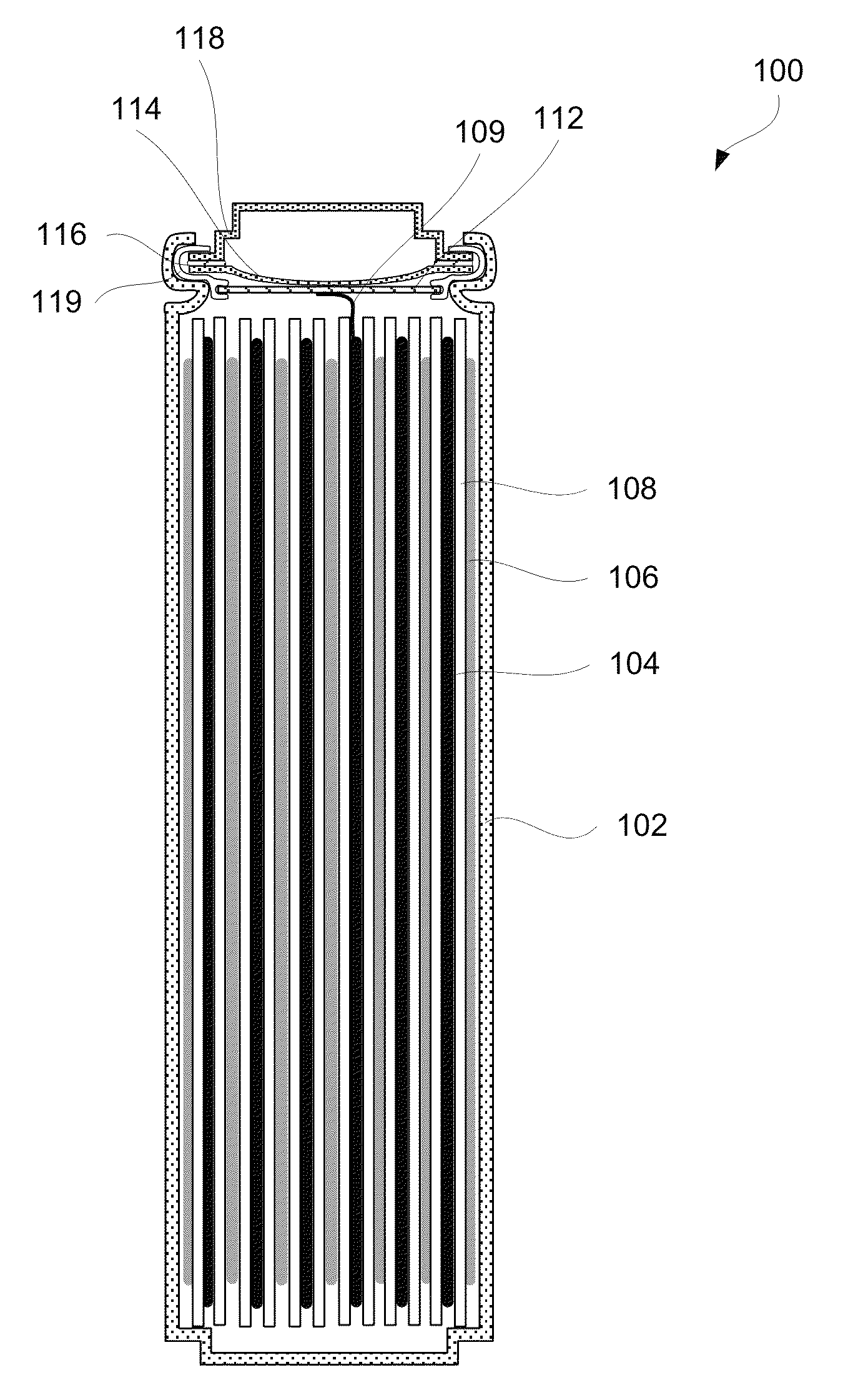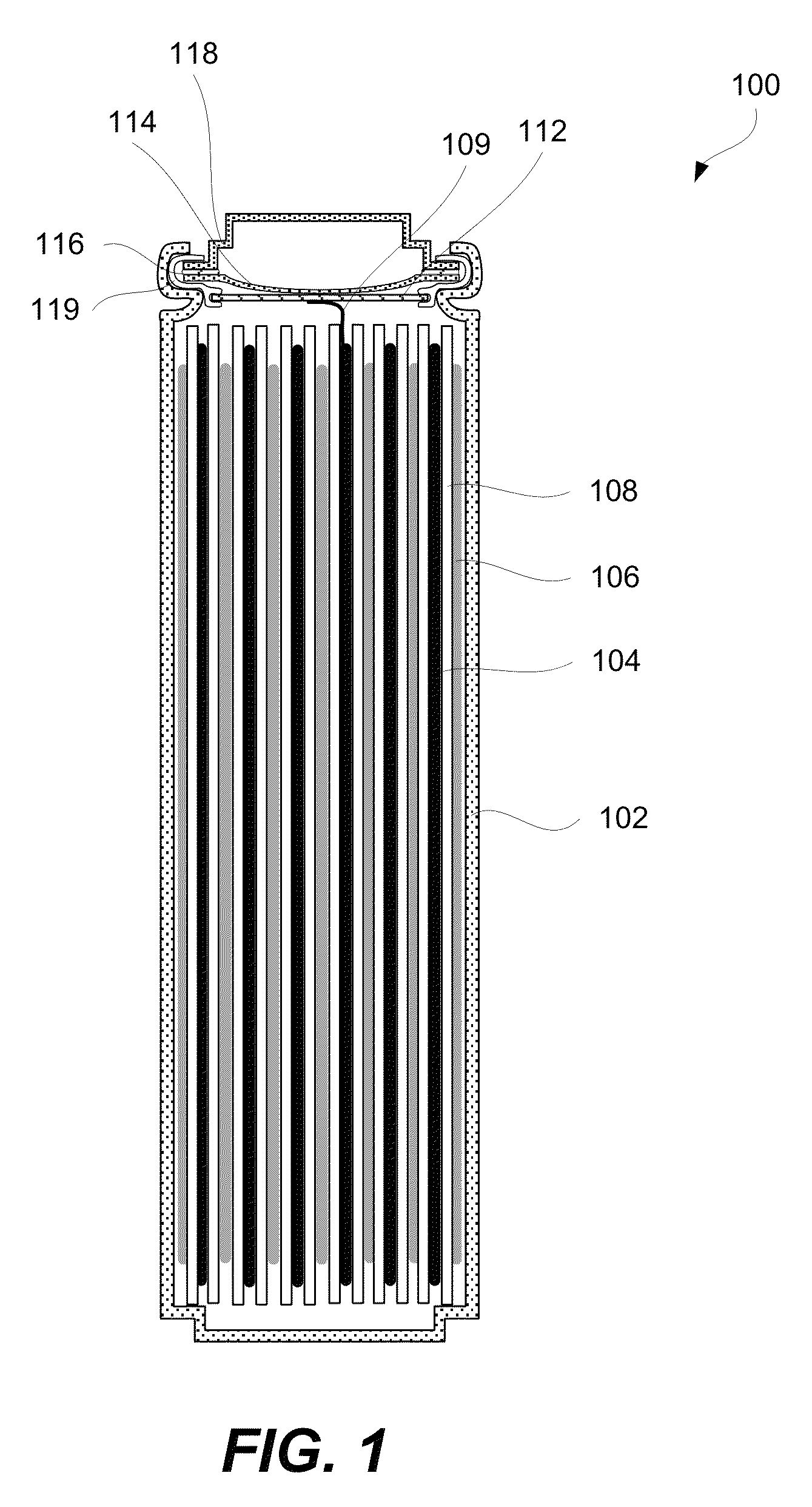Electrolytes including fluorinated solvents for use in electrochemical cells
a technology of electrochemical cells and fluorinated solvents, applied in the direction of non-aqueous electrolyte cells, cell components, electrochemical generators, etc., can solve the problems of poor chemical stability and safety, carbonate based solvents, and electrolyte containing, etc., to increase the safety characteristics of cells and less flammability
- Summary
- Abstract
- Description
- Claims
- Application Information
AI Technical Summary
Benefits of technology
Problems solved by technology
Method used
Image
Examples
case 102
[0081]Case 102 may be rigid, in particular for lithium ion cells. Other types of cells may be packed into a flexible, foil-type (polymer laminate) case. For example, pouch cells are typically packed into a flexible case. A variety of materials can be chosen for case 102. Selection of these materials depends in part on an electrochemical potential to which case 102 is exposed to. More specifically, the selection depends on which electrode, if any, case 102 is connected to and what are operating potentials of this electrode.
[0082]If case 102 is connected to positive electrode 106 of a lithium ion battery, then case 102 may be formed from titanium 6-4, other titanium alloys, aluminum, aluminum alloys, and 300-series stainless steel. On the other hand, if case 102 is connected to negative electrode 104 of the lithium ion battery, then case 102 may be made from titanium, titanium alloys, copper, nickel, lead, and stainless steels. In some embodiments, case 102 is neutral and may be conne...
PUM
| Property | Measurement | Unit |
|---|---|---|
| weight ratio | aaaaa | aaaaa |
| temperature | aaaaa | aaaaa |
| dynamic viscosity | aaaaa | aaaaa |
Abstract
Description
Claims
Application Information
 Login to View More
Login to View More - R&D
- Intellectual Property
- Life Sciences
- Materials
- Tech Scout
- Unparalleled Data Quality
- Higher Quality Content
- 60% Fewer Hallucinations
Browse by: Latest US Patents, China's latest patents, Technical Efficacy Thesaurus, Application Domain, Technology Topic, Popular Technical Reports.
© 2025 PatSnap. All rights reserved.Legal|Privacy policy|Modern Slavery Act Transparency Statement|Sitemap|About US| Contact US: help@patsnap.com



